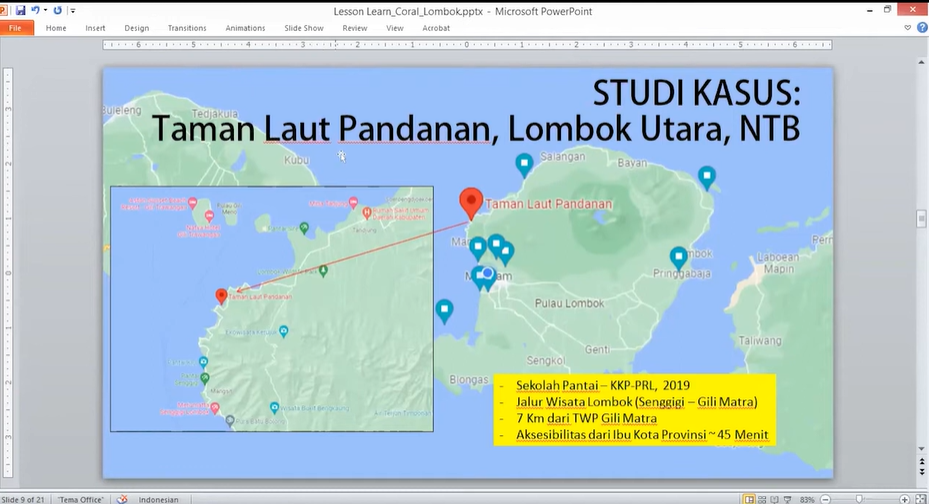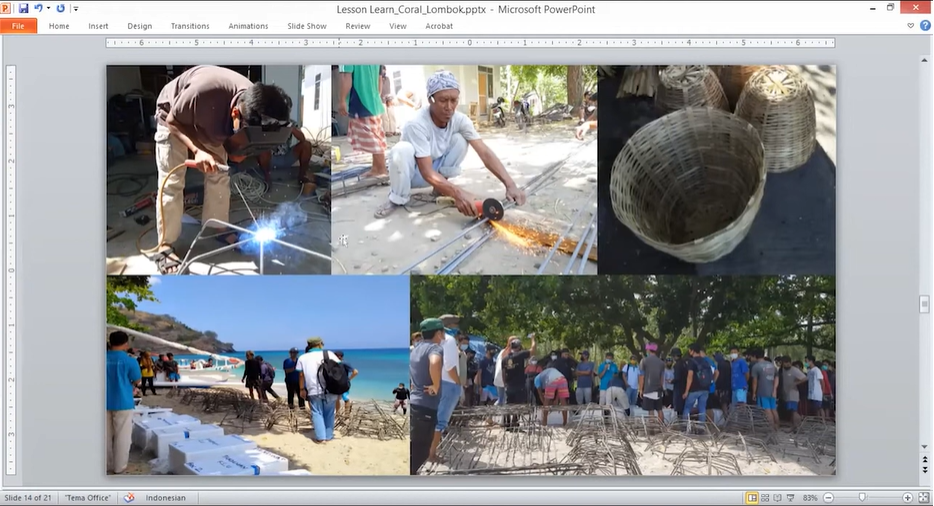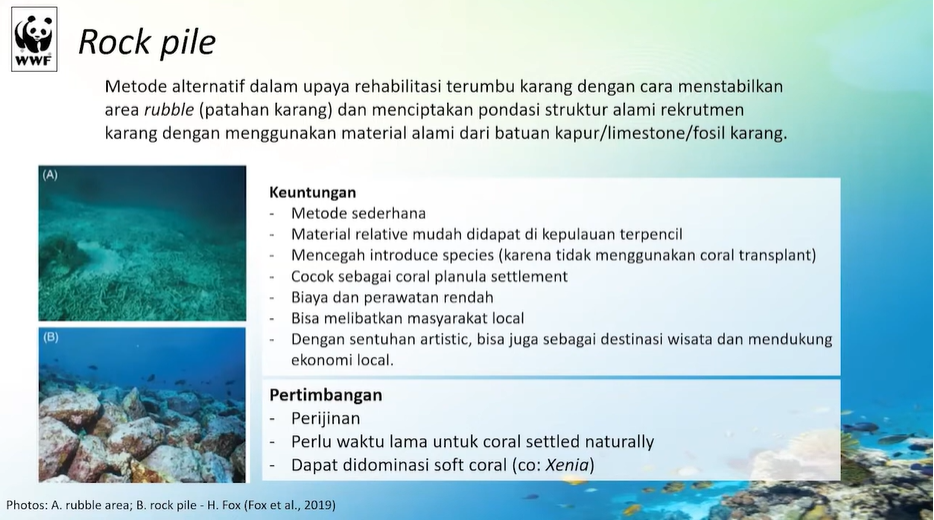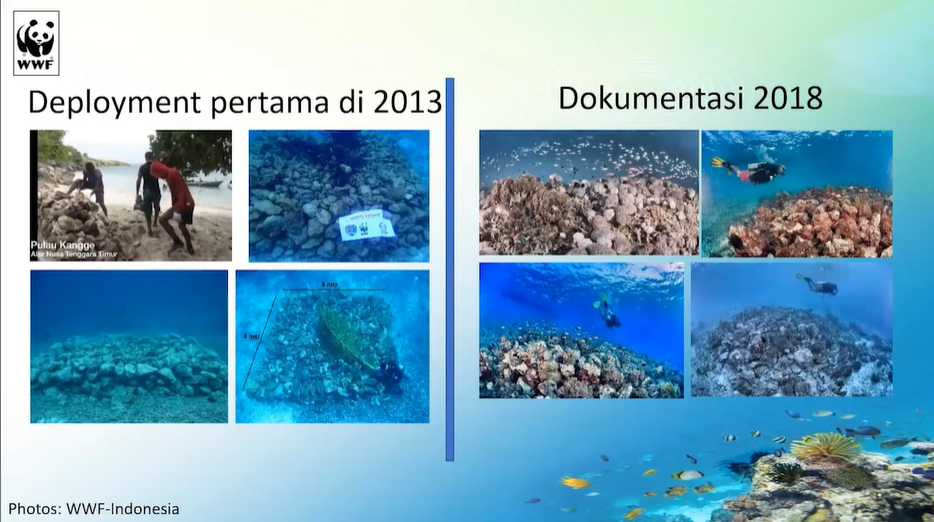In the first SCORES session of 2022, reef restoration practitioners, academics, and government officials convened online to exchange strategies for coral recovery across the archipelago. The event featured speakers from BPSPL Denpasar and WWF Indonesia, who shared place-based approaches to reef rehabilitation—from policy frameworks to hands-on community training.
“It’s not just about planting coral. It’s about building systems that last,”


Government-led Restoration with Community at the Core
Barmawi from BPSPL Denpasar outlined the agency’s role in managing coastal and marine ecosystems, including coral reefs. With many sites across East Java to Alor showing signs of degradation, the agency has turned to a “pentahelix” model—linking academia, business, government, communities, and media to build shared restoration strategies.
A focal site in North Lombok exemplifies this approach. Using the 3E framework—Ecology, Economy, and Education—the project combines reef rehabilitation with ecotourism and local training. “The youth are at the heart of this,” said Barmawi. “They learn to dive, build reef structures, and guide tourists—ensuring that restoration supports livelihoods.” Coral fragments are sourced via CSR from ornamental coral firms, while local universities are tapped to fill knowledge gaps in monitoring and planning.


The Rockpile Method in Alor
Erdi Lazuardi from WWF Indonesia introduced a low-tech solution known as the Rockpile method—stacking limestone rubble to stabilize damaged substrates. He explained that this technique avoids introducing foreign species, while encouraging natural recruitment of coral and fish. On Pulau Kangge in Alor, pilot sites have shown significant increases in coral cover and fish biomass.
While cost-effective, the method requires patience and context-specific adaptation. “Every site is different in hydrology, substrate, and community,” said Erdi. He called for deeper studies into shoreline morphology and cost-efficiency to inform scaling efforts.
The Q&A session revealed strong interest in practical implementation: participants asked about cost per square meter, species selection, and long-term maintenance. Barmawi identified Montipora as a fast-growing pioneer coral used in Lombok. Erdi emphasized matching restoration methods with local environmental and socio-economic conditions.
Conversation also turned to economic valuation and regulatory clarity. Participants expressed the need for guidelines on coral fragment sourcing and mechanisms for assessing return on investment. There was wide agreement that a dedicated session on policy and restoration economics is urgently needed.
SCORES’ role as an open forum for cross-sector learning. Both speakers called for greater synergy between practitioners and researchers, along with more focus on real-world impact evaluation. As Indonesia’s coral reef restoration network grows, sessions like this lay the groundwork for more inclusive, science-based, and locally rooted marine conservation.
